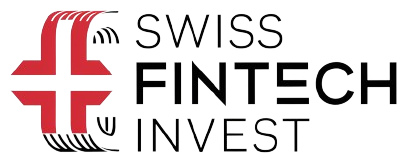Understanding Health Savings Accounts (HSAs)
A Health Savings Account (HSA) is a powerful financial tool that allows individuals to save money for medical expenses while enjoying significant tax advantages. HSAs are designed to work in conjunction with high-deductible health plans (HDHPs), offering a unique combination of tax benefits and investment opportunities.
HSAs have gained popularity in recent years due to their triple tax advantage: contributions are tax-deductible, the account grows tax-free, and withdrawals for qualified medical expenses are also tax-free. This makes HSAs an attractive option for those looking to save for both current and future healthcare costs, as well as for retirement.
What is an HSA?
An HSA is a savings account specifically designed to help individuals with HDHPs pay for out-of-pocket medical expenses. Contributions to an HSA can be made by the account holder, their employer, or both. The funds in the account can be used to pay for a wide range of qualified medical expenses, including deductibles, copayments, and prescription medications.
One of the most significant advantages of an HSA is that the account balance rolls over from year to year, allowing the funds to accumulate and grow over time. This makes HSAs an excellent vehicle for saving for retirement, as the account can be used to pay for healthcare expenses in retirement tax-free.
HSA Eligibility Requirements
To be eligible for an HSA, an individual must be enrolled in an HDHP. For 2023, an HDHP is defined as a health plan with a minimum deductible of $1,500 for individual coverage or $3,000 for family coverage. The plan must also have a maximum out-of-pocket limit of $7,500 for individual coverage or $15,000 for family coverage.
In addition to being enrolled in an HDHP, an individual must not be covered by any other health plan that is not an HDHP, cannot be enrolled in Medicare, and cannot be claimed as a dependent on someone else’s tax return.
HSA Contribution Limits for 2023 and 2024
The IRS sets the contribution limits for HSAs each year. For 2023, the contribution limit for individuals with self-only HDHP coverage is $3,850, while the limit for those with family HDHP coverage is $7,750. Individuals aged 55 and older can make an additional catch-up contribution of $1,000.
For 2024, the contribution limits are slightly higher. The limit for individuals with self-only HDHP coverage is $4,150, and the limit for those with family HDHP coverage is $8,300. The catch-up contribution for individuals aged 55 and older remains at $1,000.
| Coverage Type | 2023 Contribution Limit | 2024 Contribution Limit |
|---|---|---|
| Self-only HDHP | $3,850 | $4,150 |
| Family HDHP | $7,750 | $8,300 |
| Catch-up contribution (age 55+) | $1,000 | $1,000 |
HSA Investment Options
One of the most powerful features of an HSA is the ability to invest the account balance for long-term growth. Many HSA providers offer a range of investment options, including stocks, bonds, ETFs, and mutual funds. By investing HSA funds, account holders can potentially benefit from tax-free growth and build a significant nest egg for future healthcare expenses or retirement.
Index Funds and ETFs
Index funds and ETFs are popular investment options for HSAs due to their low fees and broad diversification. These funds aim to track the performance of a specific market index, such as the S&P 500 or the Russell 2000. By investing in a diversified portfolio of stocks or bonds, index funds and ETFs can provide exposure to a wide range of companies and sectors, reducing the risk associated with investing in individual stocks.
When choosing index funds or ETFs for an HSA, it’s essential to consider factors such as expense ratios, tracking error, and the fund’s investment strategy. Look for funds with low expense ratios, as high fees can eat into investment returns over time. Additionally, consider the fund’s tracking error, which measures how closely the fund’s performance matches that of its benchmark index.
Dividend Funds and Individual Stocks
For investors seeking higher potential returns, dividend funds and individual stocks may be attractive options. Dividend funds invest in companies that pay regular dividends to shareholders, providing a source of income in addition to potential capital appreciation. Individual stocks, on the other hand, allow investors to select specific companies that they believe have strong growth potential or are undervalued by the market.
However, it’s important to note that investing in dividend funds and individual stocks carries a higher level of risk compared to index funds and ETFs. The performance of these investments is more dependent on the success of individual companies, and there is a greater potential for loss if a company experiences financial difficulties or fails to meet market expectations.
Short-Term Bond Funds and Money Market Funds
For investors with a more conservative risk tolerance or those nearing retirement, short-term bond funds and money market funds may be more appropriate investment options. These funds invest in high-quality, short-term debt securities, such as government bonds, corporate bonds, and commercial paper.
While short-term bond funds and money market funds typically offer lower returns compared to stocks and longer-term bonds, they also provide greater stability and lower risk. These funds can be a good choice for investors who prioritize capital preservation over growth or who may need to access their HSA funds in the near future.
Robo-Advisors for HSA Investing
For investors who prefer a more hands-off approach to HSA investing, robo-advisors can be an attractive option. Robo-advisors are digital investment platforms that use algorithms to create and manage personalized investment portfolios based on an investor’s goals, risk tolerance, and time horizon.
Some HSA providers, such as Fidelity, offer robo-advisor services specifically designed for HSA investing. For example, Fidelity Go is a robo-advisor that provides automated investing and personalized advice for HSA account holders. By using a robo-advisor, investors can benefit from professional portfolio management and ongoing account monitoring, while still enjoying the tax advantages and flexibility of an HSA.
HSA Investment Strategies
When investing HSA funds, it’s essential to develop a well-thought-out investment strategy that aligns with your financial goals, risk tolerance, and time horizon. Here are some key considerations and strategies for maximizing the growth potential of your HSA investments.
Treat Your HSA Like a Retirement Account
One of the most effective strategies for HSA investing is to treat the account like a retirement savings vehicle. By maximizing your contributions each year and investing the funds for long-term growth, you can potentially build a significant nest egg to cover healthcare expenses in retirement.
When investing for the long term, it’s generally advisable to allocate a larger portion of your HSA portfolio to growth-oriented investments, such as stocks and stock-based funds. While these investments may experience short-term volatility, they have historically provided higher returns over the long run compared to more conservative options like bonds and cash.
Consider Your Time Horizon and Risk Tolerance
When developing your HSA investment strategy, it’s crucial to consider your time horizon and risk tolerance. Your time horizon refers to the length of time before you expect to need the funds in your HSA, while your risk tolerance reflects your ability and willingness to tolerate market fluctuations and potential losses.
If you have a longer time horizon and a higher risk tolerance, you may be able to allocate a larger portion of your HSA portfolio to stocks and other growth-oriented investments. On the other hand, if you have a shorter time horizon or a lower risk tolerance, you may want to prioritize more conservative investments, such as bonds and cash equivalents.
Rebalance Your HSA Portfolio Regularly
Over time, the performance of different asset classes can cause your HSA portfolio to drift away from your target asset allocation. For example, if stocks outperform bonds, your portfolio may become overweighted in stocks, potentially increasing your overall risk exposure.
To maintain your desired asset allocation and risk level, it’s important to rebalance your HSA portfolio regularly. Rebalancing involves selling investments that have become overweighted and using the proceeds to buy investments that have become underweighted, thereby bringing your portfolio back in line with your target allocation.
Many HSA providers offer automatic rebalancing tools that can help simplify this process. Alternatively, you can set a regular schedule (e.g., annually or semi-annually) to review your portfolio and make any necessary adjustments.
Maximizing HSA Benefits
In addition to investing for long-term growth, there are several strategies you can use to maximize the benefits of your HSA and make the most of its unique tax advantages.
Leverage the Triple Tax Advantage
One of the most significant benefits of an HSA is its triple tax advantage. Contributions to an HSA are tax-deductible, investment growth is tax-free, and withdrawals for qualified medical expenses are also tax-free.
To fully leverage this advantage, consider maximizing your HSA contributions each year. By contributing the maximum amount allowed by the IRS, you can reduce your taxable income, potentially lowering your overall tax liability. Additionally, by investing your HSA funds for long-term growth, you can benefit from tax-free compounding, potentially building a larger nest egg for future healthcare expenses.
Use HSA Funds for Qualified Medical Expenses
To enjoy the tax-free withdrawal benefits of an HSA, it’s important to use the funds only for qualified medical expenses. These expenses include a wide range of healthcare costs, such as deductibles, copayments, prescription medications, and dental and vision care.
The IRS provides a detailed list of qualified medical expenses in Publication 502. By familiarizing yourself with these expenses and keeping accurate records of your healthcare spending, you can ensure that you’re using your HSA funds in a tax-efficient manner.
Plan for Long-Term Care Expenses
One often-overlooked benefit of an HSA is its potential to help cover long-term care expenses. According to a study by Genworth Financial, the median annual cost of a private room in a nursing home was $108,408 in 2021, while the median annual cost of assisted living was $54,000.
By investing your HSA funds for long-term growth and allowing the account balance to accumulate over time, you can potentially build a significant resource to help cover these costs in the future. Additionally, if you have a high-deductible health plan that includes long-term care insurance, you may be able to use your HSA funds to pay for the premiums, further leveraging the account’s tax advantages.
See also:




Leave a Comment